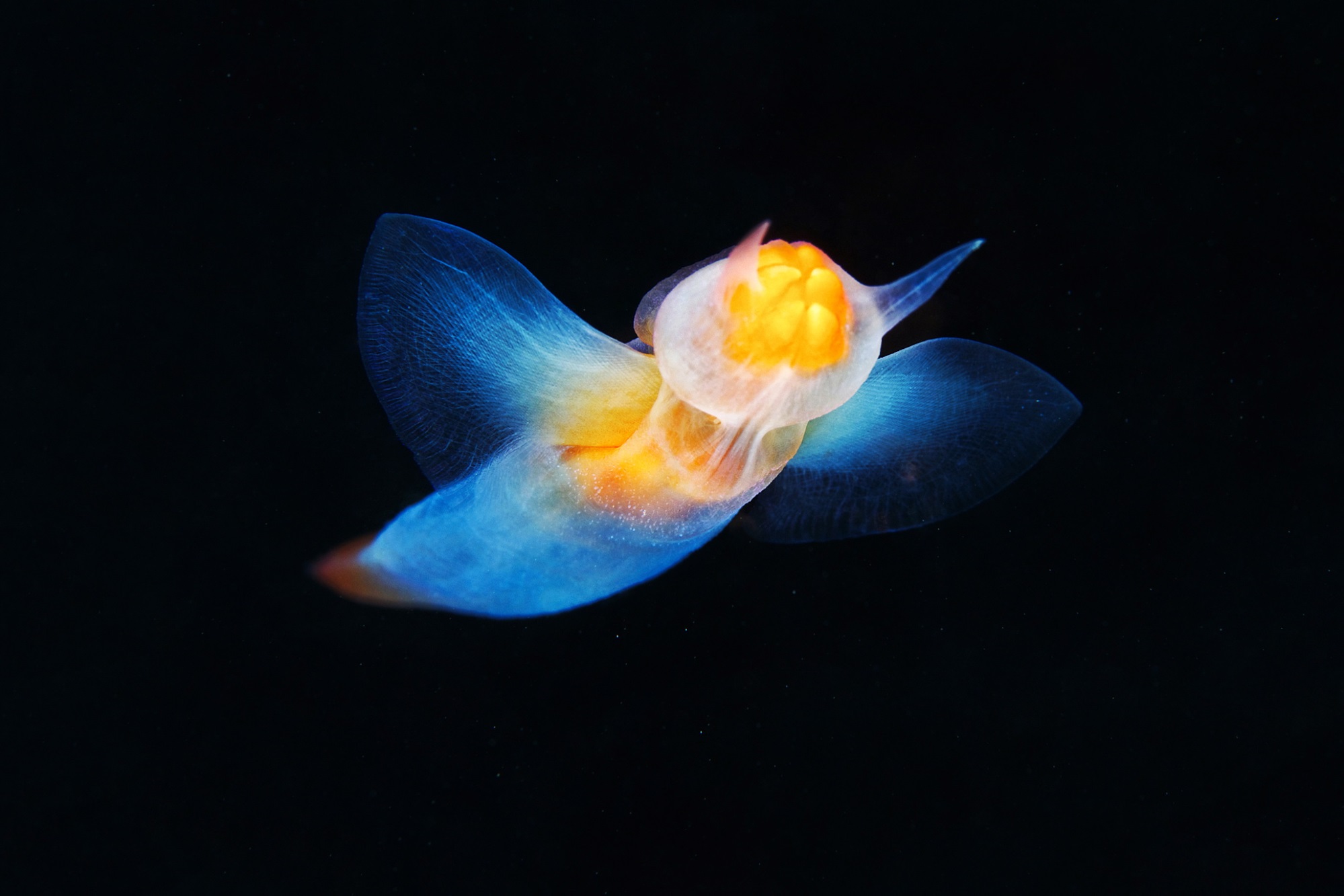Angels of the sea
Sea angels are dreamlike tiny beasties, another proof that the ocean is full of mysteries. They are group of gelatinous sea slugs that have a scientific name of Gymnosomata. Sea Angels are also known as “cliones”, but this is a misnomer because the Clionidae family is just one of the many families that make up this clade.
These sea angels, with their translucent, gelatinous skin and luminous glow, almost appear extraterrestrial, but they are real and live in the depths of our ocean. Their habitats are in polar environments with sub-sea ice, such as the Arctic Seas and the North Atlantic. Also, in the equatorial regions.

They are an invertebrate sea slug ranging from 3 cm to 8 cm with a peculiar pair of swimming wings known as peropoida that are attached to the sides of their anterior at the midline. Sea angels catch their prey by launching tentacles from their mouths and grabbing it. The prey is then ripped from its shell and swallowed whole. They use three pairs of buccal cones (eversible tentacles without suckers), a radula, and chitinous hooks.
In terms of their life cycle, they are hermaphrodite, which indicates that they can transform into any sex to mate with another sea angel. Cross-fertilization occurs during angel mating, resulting in approximately 20-30 fertilized eggs. The eggs are laid in a gelatinous mass, from which the larvae emerge. Their larval stage is a shelled pteropod. The larva has a thimble-shaped shell and a ciliated band around its mouth. The sea angel sheds its shell and ciliated band as it grows out of the larval stage, grows wings, and lengthens its body. Sea angels have a two-year lifespan.
Here is a video of sea angels mating ritual dance. From Caters Clip, which was filmed by a marine biologist Alexander Semenov.
Sea angels are tiny species of mollusk, it is indeed straightforward to see why this creature got its name thanks to its translucent body and wing-like legs.
Cover Photo by Alexander Semenov.


